Epsilon Launch Vehicle
This article describes the basic Epsilon Launch Vehicle flown for the first and only time in 2013. The operational Enhanced Epsilon Rocket is described in detail here.
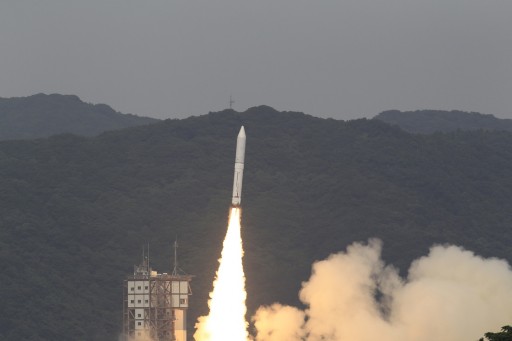
Epsilon is a Japanese expendable launch system designed to lift small payloads into Low Earth Orbit. The all-solid launch vehicle uses a number of heritage components flown on different vehicles and its major objective is to provide a low-cost launch capability for small scientific spacecraft.
The project was started by the Japanese Aerospace Exploration Agency JAXA in 2007 as a follow-on to the M-V rocket that was retired in 2006.
Epsilon was initiated to reduce cost as M-V launches were deemed too expensive coming at a price of up to $90 million.
| Type | Epsilon |
| Height | 24.4m |
| Diameter | 2.6m |
| Launch Mass | 91,000kg |
| Stage 1 | SRB-A3 |
| Stage 2 | M-34c |
| Stage 3 | KM-V2b |
| Stage 4 | Post Boost Stage (Optional) |
| Mass to LEO | 1,200kg ( 3 Stages) |
| Mass to SSO | 450kg (4 Stages) |
The major cost-cutting measure is the replacement of the expensive M-V first stage with an SRB-A3 Solid Rocket Motor that is used as a booster on the Japanese H-II rockets. The second and third stage of Epsilon are modified versions of the third and fourth stages developed for M-V.
Epsilon will be available in two configurations: Epsilon-1 that premieres in 2013 and an Enhanced Epsilon, a more powerful vehicle featuring upgraded upper stages, that will be available in 2016.
Both of these versions can fly in a three-stage configuration and also in a four-stage variant with a Post-Boost Stage acting as upper stage.
Epsilon stands 24.4 meters tall, is 2.5 meters in diameter and has a liftoff mass of 91,000 Kilograms. It is operated from the Uchinoura Space Center.
Epsilon-X with three stages can deliver payloads of up to 1,200 Kilograms to a 200 by 500-Kilometer Low Earth Orbit. With PBS as fourth stage, the vehicle can reach Sun Synchronous Orbits with a payload capacity of 450 Kilograms.
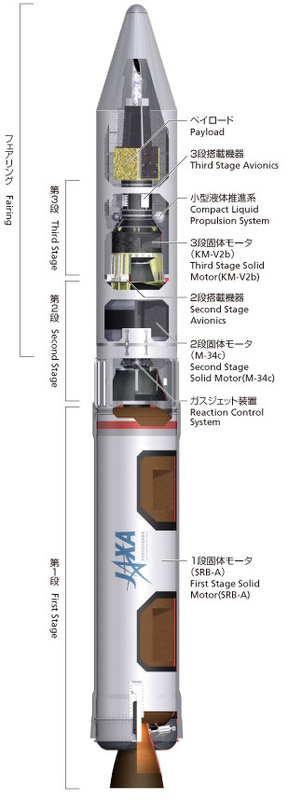
First Stage
| Type | SRB-A3 |
| Diameter | 2.5m |
| Length | 11.68m |
| Launch Mass | 75,500kg |
| Propellant | Solid – BP-207J |
| Propellant Mass | 66,000kg |
| Motor Case | Monolithic Carbon-Fiber- |
| Reinforced Polymer | |
| Thrust (SL) | 2,150kN |
| Thrust (Vacuum) | 2,305kN |
| Nominal Pressure | 11.1MPa |
| Burn Time | 112sec |
| Specific Impulse | 283.6sec |
| Control | Electric MNT Vector Control |
| Roll Control | Solid Motor Side Jet |
| 1/2 Interstage | 1.58m |
The first stage of the Epsilon Launch Vehicle is a modified SRB-A3 solid rocket booster. These boosters are used on the H-IIA and H-IIB launch vehicle to provide extra thrust to these launchers.
SRB-A3 configured as Epsilon first stage is 11.68 meters long and 2.5 meters in diameter capable of holding 66,000 Kilograms of propellants. The Booster Motor Case consists of Monolithic Carbon Fiber Polymer. The booster has a total mass of 75,500kg and has an average vacuum thrust of 2,305 Kilonewtons (235,000 Kilograms) using BP-207J-based propellant. Sea level thrust is about 2,150kN.
Control during first stage flight is provided by an electromechanical Thrust Vector Control System consisting of two servo motors that gimbal the nozzle of the booster to control pitch and yaw.
Power to the MNTVC is provided by a special high-power thermal battery. Roll control is provided by a Solid Motor Side Jet that is generated by a solid propellant gas generator. The booster burns for 114 seconds. Stage separation is accomplished with pyrotechnically initiated systems.
SRB-A3 being attached to an H-IIB
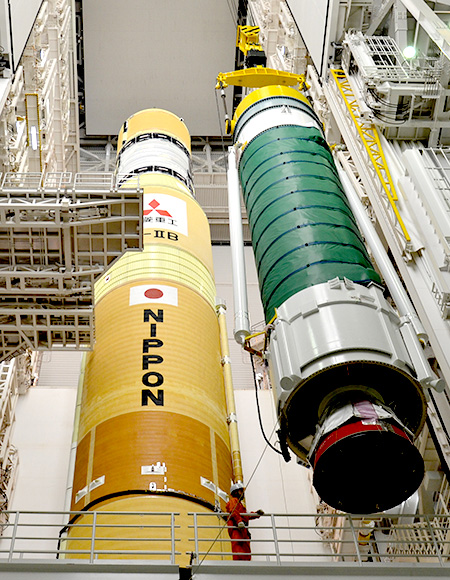
Second Stage
| Type | M-34c |
| Diameter | 2.2m |
| Length | 4.3m |
| Launch Mass | 12,300kg |
| Propellant | Solid – BP-205J |
| Propellant Mass | 10,800kg |
| Thrust (Vacuum) | 371.5kN |
| Nozzle | Extendable |
| Burn Time | 105sec |
| Specific Impulse | 300sec |
| Control | Electric MNT Vector Control |
| Roll Control | Solid Motor Side Jet |
| Coast Control | Hydrazine RCS |
The second Stage of the launcher is a modified version of the solid-fueled third stage of the M-V launcher. It is called M-34c.
The stage is 4.3 meters long and 2.2 meters in diameter with a total mass of 12,300kg including 10,800kg of propellant that is a BP-205J formula.
M-34c provides an average thrust of 371.5 Kilonewtons (37,880kg) over the course of its 105-second burn.
The second stage features an extendable nozzle that is deployed after the fairing is jettisoned and the first stage is separated.
The nozzle uses an electromechanical Thrust Vector Control System to control the flight path during its burn. A conventional Hydrazine Reaction Control System is used for vehicle control during coast phases and for roll control during burns.
.
Second Stage Deployment Test
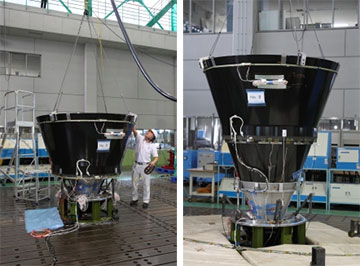
| Type | KM-V2b |
| Diameter | 1.4m |
| Length | 2.3m |
| Launch Mass | 3,300kg |
| Propellant | Solid – HTPB |
| Propellant Mass | 2,500kg |
| Thrust (Vacuum) | 99.8kN |
| Nozzle | Extendable |
| Burn Time | 90sec |
| Specific Impulse | 301sec |
| Stabilization | Spin-Stabilized |
Third Stage
The third Stage of the Epsilon rocket is also solid-fueled. It is called KM-V2b and is a modified version of the fourth stage used on the M-V launcher.
The stage is 2.3 meters long and 1.4 meters in diameter with a launch mass of 3,300 Kilograms that include 2,500kg of propellant.
It also features an extendable nozzle. KM-V2b uses HTPB based propellant to generate an average thrust of 99.8 Kilonewtons (10,180kg). It burns for 90 seconds.
The third stage is spin-stabilized.
.
Fourth Stage – PBS
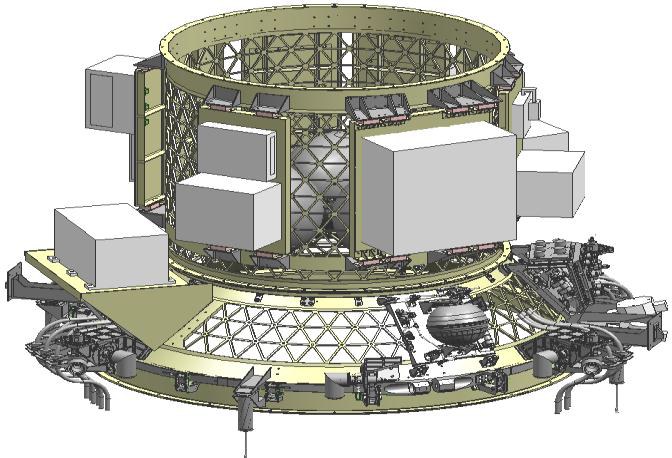
| Type | PBS – Post Boost Stage |
| Diameter | 1.2m |
| Length | 1.5m |
| Launch Mass | 300kg |
| Propellant | Hydrazine |
| Propellant Mass | ~100kg |
| Thrust (Vacuum) | 0.4kN |
| Burn Time | Up to 1,100sec |
| Specific Impulse | 215sec |
| Attitude Control | Hydrazine RCS |
The optional Post Boost Stage is used when precise injections are required by payloads. It is also used to reach orbits such as different Sun Synchronous Orbits.
Typically, the PBS performs orbital maneuvers after the third stage of the launcher delivered the stack to a preliminary orbit. Comparing with the three-stage version, PBS reduces Perigee Error by 5km, Apogee Error by 80km and inclination errors by 0.4 degrees.
Unlike the other stages of Epsilon, the Post Boost Stage uses liquid propellant in the form of Hydrazine that is consumed by a small liquid-fueled engine to deliver 0.4 Kilonewtons of thrust (40.8kg). PBS is 1.2 meters in diameter and 1.5 meters in diameter equipped with several spherical tanks that can hold approximately 100kg of propellants. The PBS structure has a launch mass of less than 200kg.
PBS can support burn times of up to 1,100 seconds being capable of performing multiple burns to provide flexibility to trajectory designs and target orbits.
Payload Fairing
| Diameter | 2.5m |
| Length | 11.6m |
| Mass | 1,000kg |
| Sep Altitude | 150km |
| Notes | Protects Payload & Stages 2,3,4 |
The Payload Fairing of the Epsilon launcher is 2.5 meters in diameter and 11.1 meters long weighing about 1,000 Kilograms.
It is directly attached to the first stage of the launch vehicle and protects the payload, PBS, 3rd stage and part of the second stage. The nozzle of the second stage is housed in the interface space on top of the first stage. This simple design allows the upper two stage to fly without any casings or protective materials as they are only exposed once the vehicle has departed the dense portion of Earth’s atmosphere.
Injection Accuracy – Into 500km SSO
| Parameter | 3 Stages | 4 Stages w/ PBS |
| Perigee | +/- 25km | +/- 20km |
| Apogee | +/- 100km | +/-20km |
| Inclination | +/- 0.6° | +/- 0.2° |
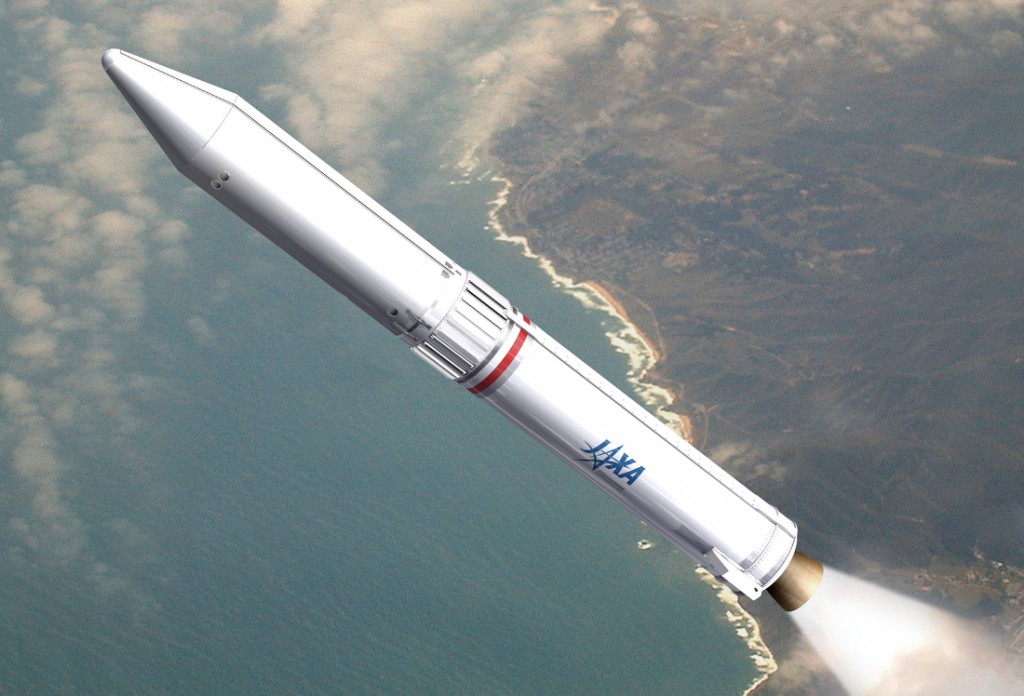
Typical Flight Profile
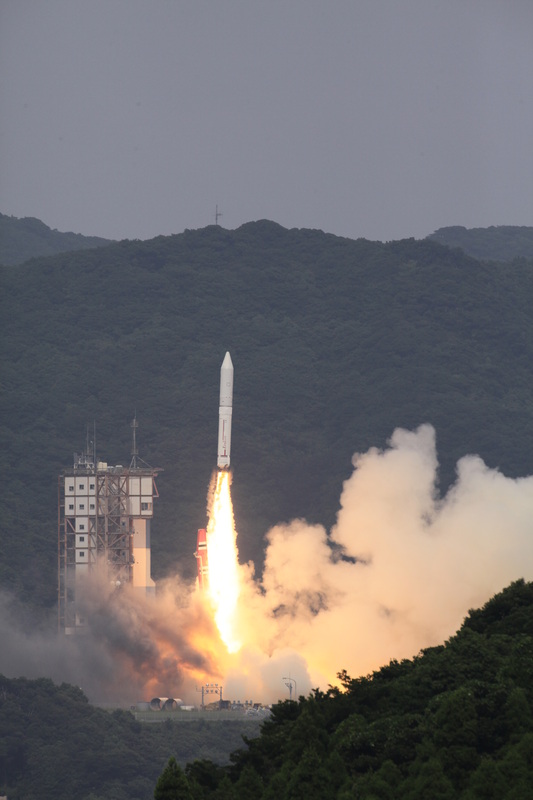
Following a short countdown of just three hours that features vehicle health checks, computer reconfigurations and flight software load, the SRB-A3 first stage is ignited and begins a short vertical climb before pitching and rolling onto the pre-determined ascent trajectory.
The first stage burns for about 1 minute and 54 seconds before shutting down at an altitude of 88 Kilometers. At that point, the vehicle uses its forward momentum to coast uphill. At T+2:30, the vehicle is nearly 150 Kilometers in altitude allowing the fairing to be jettisoned. The fairing has to be jettisoned before stage separation because it is directly attached to the first stage. First stage separation comes at around T+2:40 followed by second stage nozzle deployment and M-34c ignition four seconds later at an altitude of 155 Kilometers. The second stage burns for 105 seconds.
After shutdown at T+4:29, the vehicle enters a six-minute coast phase to climb uphill to apogee so that the third stage burn can serve as circularization maneuver – raising the perigee and boosting the stack into orbit. At T+10:34, the second stage is jettisoned, followed by third stage spin-up and ignition four seconds later. The third stage burns out at T+11:57. After that, the vehicle holds onto the stage for about five more minutes.
Following several minutes after staging, the PBS performs its first burn to optimize the orbit and raise the stack’s altitude.
The second PBS firing usually comes after half an orbit at about T+50 minutes to place the vehicle into its desired trajectory.
Following third stage separation, the PBS can perform a number of flight scenarios to deliver the vehicle to a variety of orbits and trajectories.
Advanced Technology
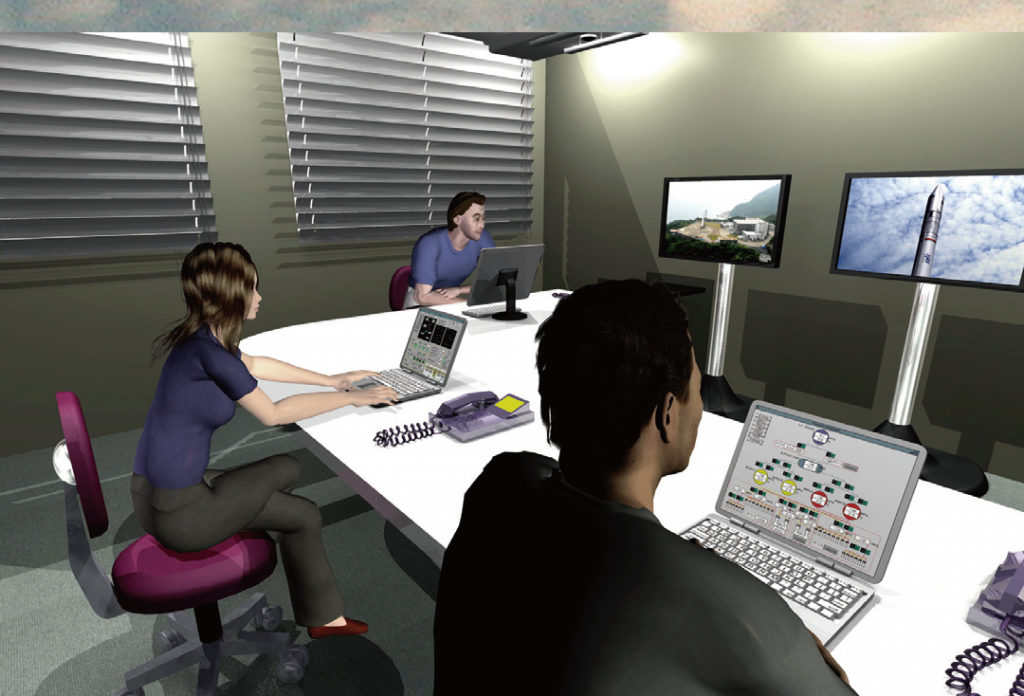
Epsilon has been designed to feature a number of advanced technologies and techniques to simplify launch vehicle operations, speed up the launch preparation process and minimize personnel requirements and cost.
The production process of Epsilon uses new technologies and processes so that a spacecraft can be launched within one year of the signing of the launch contract instead of three years that were required for M-V. The launch campaign at the launch complex has also been shortened. The assembly process of the Epsilon launcher at the Pad can get underway as late as seven days before liftoff compared to a campaign of 42 days for M-V. The launch countdown has also been shortened from nine to three hours.
Epsilon employs a number of innovations that increase the autonomy of the launcher and its state-of-the art computers. Checks during the countdown will be performed automatically by the vehicle to reduce time consumption for checks as well as launch control personnel. The launcher has been designed for operations via a Remote Launch Control Center that uses a secure internet connection to access the rocket that could be launched from any point on Earth.
These systems will be refined during the operation of Epsilon to ultimately develop a fully autonomous launcher that can make decisions such as Range Safety and Flight Termination on its own using its artificial intelligence.
Also, Epsilon uses components that can easily be shared with other launchers through the use of common interfaces
